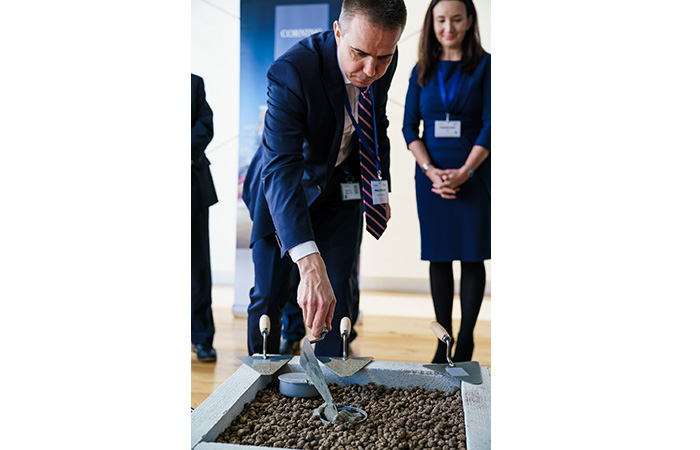
Corning starts construction on second manufacturing facility in Strykow, Poland
Corning Incorporated is starting construction of a second manufacturing facility in Strykow, Poland, driven by strong growth in demand for its fiber optic products and solutions in Europe, the Middle East and Africa. The company will break ground Nov. 14 for the facility, which will be adjacent to the company’s existing Strykow plant and open in 2018.
The new plant will eventually create 2,000 job openings, primarily for production staff and engineers. The expanded Strykow campus will be Corning’s largest manufacturing operation for optical communications solutions in Europe, the Middle East and Africa. The expansion flows from Corning’s strategy of locating its facilities closest to its customers to facilitate efficient supply for their immediate needs and provide Corning with advantaged access to global markets.
Corning’s manufacturing operations in Poland date back to 2001, when it opened a plant in Lodz. After five years, due to rapid growth, the facility moved to its current site at SEGRO Logistics Park Strykow.
Mariusz Bielawski, a leader of the new plant project, said: “At present we employ over 2,500 people in Strykow, mainly production workers and engineers. We have decided to expand our business in Poland because we are very satisfied with the local workforce, who possess a high level of commitment and professionalism. It is thanks to them that we can develop and deliver products at the highest level for international customers. What is a big advantage of Strykow that I want to highlight, above all, is the presence of great specialists, graduates of Lodz universities.”
Magdalena Szulc, SEGRO Director for Central Europe, said: “Corning is historically our first customer in Poland -- we have been cooperating for nearly 12 years. The existing 43,000 square meter Corning facility in Strykow was built in 2006 as a tailor-made solution, as is the new 38,000 square meter building, which we have already started to build. Corning’s success and growth show that Strykow is a great place for business development, and the quality of the buildings we supply is so high that after a dozen or so years of using, customers are choosing to remain in them and are open to further cooperation for their next investments.”
The start of construction for the new Corning facility in Strykow coincides with the tenth anniversary of Corning’s Polish technology department, which develops new products for European and global markets. “There will be 27.1 billion networked devices in 2021 – more than three times the global population,” said Grzegorz Tosik, a technology manager for Corning. “Transmission of such large amounts of data is enabled by optical fiber, created by a manufacturing process developed by Corning.”
In Poland, as in other markets where it operates manufacturing facilities, Corning has emphasized community involvement. It has worked with Technical University to educate and develop future engineers and has supported events promoting diversity and the recruitment of more women to STEM careers – those involving science, technology, engineering and math. Corning employees in Poland also participated in the country’s biggest charity relay race.
Under its Strategy and Capital Allocation Framework, Corning plans to invest $10 billion in growth opportunities around the world through 2019, allowing Corning to maintain its market-leading position as the world’s largest fiber producer with the lowest-cost manufacturing platform.
According to FTTH Council’s 2016 Panorama, MENA region has significantly improved during last year. Based on the deployment of the different FTTH/B projects in the Middle East and North Africa (MENA) region and the commercial evolution from operators and organisms, the number of FTTH/B subscribers will increase 15 percent in 2017 to 2.9 million subscribers, while the FTTH/B homes passed will increase to 5.9 million, representing an increase of 6.8 percent.
The growth in FTTH/B coverage and take up rate is led by the dynamism of GCC countries, notably UAE and KSA markets, according to the report.
‘’In the Middle East and North Africa (MENA) region, Corning is seeing increased demand from the growth of fiber-to-the-home projects and the push for higher data speeds among network operators’’, said Juan Colina, Corning Optical Communications’ regional sales director for the Middle East. “Demand in the MENA region has stepped up significantly in the last 18 months,” he said.
























